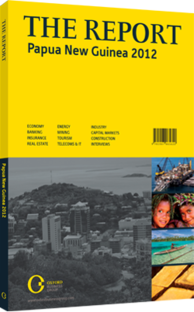On the line: Delivering microfinance products on mobile networks
Boosting financial inclusion and literacy is a key challenge facing the domestic financial services industry in Papua New Guinea. Based on recent estimates from the Asian Development Bank (ADB), only around 15% of the population has a bank account. The remaining 85% remains cut off from the formal financial system. Similarly, PNG’s informal sector is thought to account for 80-85% of overall economic activity in the country, dwarfing the formal economy, which consists primarily of the energy, mining, industrial, transport, financial services and construction sectors. Thus, cash transactions dominate business in PNG, and in some particularly remote regions, non-cash barter deals are still common. “[Financial inclusion and financial literacy are] particularly important for us in PNG, where a large portion of our population is ‘unbanked’ and ‘underserved’, especially those in the rural areas, urban settlements and those engaged in the informal sector,” said Don Pomb Polye, the minister of finance, when speaking with the local press in late 2011.
MOBILE BANKING: Considering the generally low incomes throughout much of the country – according to the UN Development Programme, PNG is one of the poorest countries in Asia – microfinance products are increasingly seen as the best option for boosting financial inclusion. Similarly, taking into account PNG’s challenging topography and the fact that between 85% and 90% of Papua New Guineans live in rural communities, financial institutions are focusing on technology-driven microfinance products that do not require customers to have access to a brick-and-mortar bank.
Indeed, most of PNG’s leading commercial banks only operate a few branches, with Bank of South Pacific (BSP), the nation’s largest bank, overseeing a network of 35 branches. Instead, the commercial banks are investing heavily in mobile microfinance banking technology. In early 2011 BSP Rural – a subsidiary of BSP that has simple banking services for rural customers – signed an agreement with the Pacific Microfinance Initiative, a joint venture between the International Finance Corporation and the government, to develop mobile banking technology in PNG. Similarly, both Australia and New Zealand Bank (ANZ) PNG and Westpac PNG – which, together with BSP, account for 98% of the commercial banking market – are in the process of developing mobile banking schemes. “Our aim is to double our customer base, not through branches but through mobile services,” said Mal Smyth, the head of finance and company secretary at Westpac PNG.
NICHE PLAYERS: In addition to the commercial banks, PNG is home to a handful of microfinance banks. The largest of these, Nationwide Microbank (NM), recently signed up its 100,000th customer, which makes it the second-largest bank in terms of customer accounts and the largest microfinance institution in the South Pacific region. NM was launched in 2004 as part of a microfinance project in Wau, Morobe Province. NM was incorporated in February 2007 as Wau Microbank. By the time the institution underwent a name change and rebranding effort in June 2008, it had six branches.
THE FUTURE: Since then, NM has added eight more branches, though the institution is quick to note the future is branchless banking. Before the end of 2012 the bank plans to launch MiCash, a “mobile wallet” product being piloted in West New Britain Province. Customers who enrol in the programme will be able to use any mobile handset on the Digicel network (PNG’s dominant telecommunications company) as a bank account.
“MiCash will be much more comprehensive than other mobile banking initiatives currently in development in PNG,” Tony Westaway, the managing director of NM, told OBG. “Subscribers will be able to transfer or receive money directly from a friend’s mobile phone, for example. Additionally, they will be able to deposit or withdraw money from a network of agents, which we hope will eventually number in the hundreds.”
MiCash was developed with support from ADB and the Fiji-based Pacific Financial Inclusion Programme, which works to help provide financial services to low-income communities throughout the Pacific region.
You have reached the limit of premium articles you can view for free.
Choose from the options below to purchase print or digital editions of our Reports. You can also purchase a website subscription giving you unlimited access to all of our Reports online for 12 months.
If you have already purchased this Report or have a website subscription, please login to continue.

